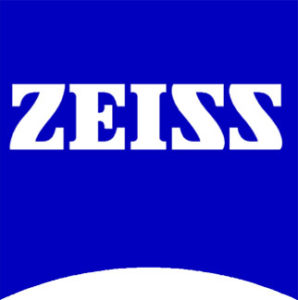News › ZEISS • Deutscher Zukunftspreis 2020
Two Zeiss Teams Make Shortlist
 The team from Carl Zeiss Meditec has been nominated for its robotic visualization system, the ZEISS KINEVO 900 – and thus shortlisted for the award.
The team from Carl Zeiss Meditec has been nominated for its robotic visualization system, the ZEISS KINEVO 900 – and thus shortlisted for the award.- The team from the ZEISS Semiconductor Manufacturing Technology (SMT) segment was also shortlisted for developing EUV lithography.
The Office of the Federal President announced today in the Hall of Fame at Munich’s German Museum the nominations for the Deutscher Zukunftspreis. ZEISS is the first-ever company to have two teams nominated for the award.
Future-ready solutions in medical and semiconductor manufacturing technology
Both nominated developments are closely linked to people’s everyday lives and represent a kind of digitalization that promotes economic and social progress in equal measure.
Representing Carl Zeiss Meditec on the team are ZEISS experts Dr.-Ing. Michelangelo Masini and Frank Seitzinger, who are joined by Prof. Dr. med. Andreas Raabe from the Swiss Inselspital (University Hospital of Bern). Their development, the ZEISS KINEVO® 900 robotic visualization system, helps enhance the efficiency and efficacy of spinal and neurosurgery. The market-shaping innovation helps doctors to improve patients‹ quality of life while driving medical progress. Comprising more than 100 innovations and 180 patents, the system marries robotics, digital visualization and modern assistance solutions. The development team worked with global clinical partners to define and develop a 3‑in‑1 system that unifies microscope, exoscope and endoscope components.
With their project, titled »EUV Lithography – A New Light in the Digital Age,« Dr. Peter Kürz from the ZEISS SMT segment, Dr. Michael Kösters from TRUMPF Lasersystems for Semiconductor Manufacturing, and Dr. Sergiy Yulin from the Fraunhofer Institute for Applied Optics and Precision Engineering (IOF) in Jena, have all been nominated and thus shortlisted for the award. EUV stands for »extreme ultraviolet« light, i.e. light with an extremely short wavelength. The technology can be used to produce much more high-performance, energy-efficient and cost-effective microchips than ever before. After all, effective digitalization requires computing power to continue rapidly increasing: today’s smartphones are a million times more powerful than the computer that was taken along on the first Moon landing back in 1969. This is made possible by a microchip that is smaller than a fingertip but has the capacity to accommodate more than ten billion transistors.
The three nominated teams have made a sizeable contribution to developing and preparing EUV technology for industrial series production. The result? A future-ready technology with more than 2,000 patents to back it up, that forms the basis for future technological progress and the digitalization of our daily lives (further information on the nominations: www.zeiss.com/dzp-nomination).
»We are delighted to have received two nominations for the Deutscher Zukunftspreis. It is a nod to the high innovative power that ZEISS stands for, and it reflects the enthusiasm for development and the courage for innovative thinking that permeates and unifies the segments of the ZEISS Group,« says Dr. Ulrich Simon, Head of Corporate Research and Technology at ZEISS, adding: »Scientific breakthroughs are particularly successful when companies and top researchers collaborate in a networked way. Here at ZEISS, the link between science and industry has grown throughout its history and it is firmly anchored in the company’s structure.“
An honor for innovative achievements in engineering and the life sciences
The Deutscher Zukunftspreis – the German President’s Award for Innovation in Science and Technology – has been presented annually since 1997 and is one of the highest accolades for scientific achievement in Germany. It honors exceptional achievements in technology, engineering and the life sciences that have resulted in viable products. Every year, the prestigious jury for the Deutscher Zukunftspreis handpicks the winners from a vast array of projects in a multi-stage selection procedure that sees three teams of researchers and their innovations battle it out in the final round of the competition. Alongside their innovative achievements, the jury also evaluates the development’s economic and social potential. The accolade will be presented in Berlin on 25 November 2020 by German President Frank-Walter Steinmeier (further information on the nominations and the Deutscher Zukunftspreis at: www.deutscher-zukunftspreis.de).
Innovation as part of the corporate identity
Innovation is a way of life at ZEISS. You might say it is in the company’s genes. As a part of the corporate strategy, it is always placed within the context of society as a whole, and it forms the basis for further growth at the ZEISS Group. That’s why ZEISS is investing 11 percent of its revenue in research and development work.
Optical technologies are vital when it comes to making progress in fields including the life sciences, medicine, IT, telecommunications, automotive, consumer and many others. All ZEISS innovations aim to ensure that future customer needs related to products, services, solutions and business models are met, and that they offer added value and benefits.
About ZEISS
ZEISS is an internationally leading technology enterprise operating in the fields of optics and optoelectronics. In the previous fiscal year, the ZEISS Group generated annual revenue totaling more than 6.4 billion euros in its four segments Semiconductor Manufacturing Technology, Industrial Quality & Research, Medical Technology and Consumer Markets (status: 30 September 2019).
For its customers, ZEISS develops, produces and distributes highly innovative solutions for industrial metrology and quality assurance, microscopy solutions for the life sciences and materials research, and medical technology solutions for diagnostics and treatment in ophthalmology and microsurgery. The name ZEISS is also synonymous with the world’s leading lithography optics, which are used by the chip industry to manufacture semiconductor components. There is global demand for trendsetting ZEISS brand products such as eyeglass lenses, camera lenses and binoculars.
With a portfolio aligned with future growth areas like digitalization, healthcare and Smart Production and a strong brand, ZEISS is shaping the future of technology and constantly advancing the world of optics and related fields with its solutions. The company’s significant, sustainable investments in research and development lay the foundation for the success and continued expansion of ZEISS‹ technology and market leadership.
With over 31,000 employees, ZEISS is active globally in almost 50 countries with around 60 sales and service companies, 30 production sites and 25 development sites. Founded in 1846 in Jena, the company is headquartered in Oberkochen, Germany. The Carl Zeiss Foundation, one of the largest foundations in Germany committed to the promotion of science, is the sole owner of the holding company, Carl Zeiss AG.
Further information at www.zeiss.com
